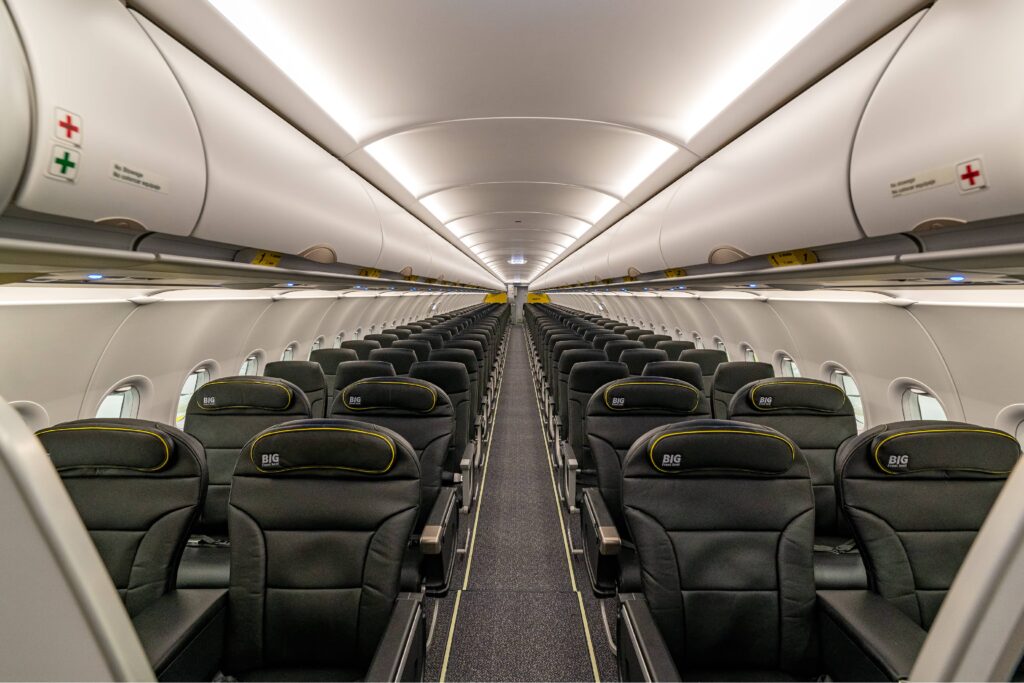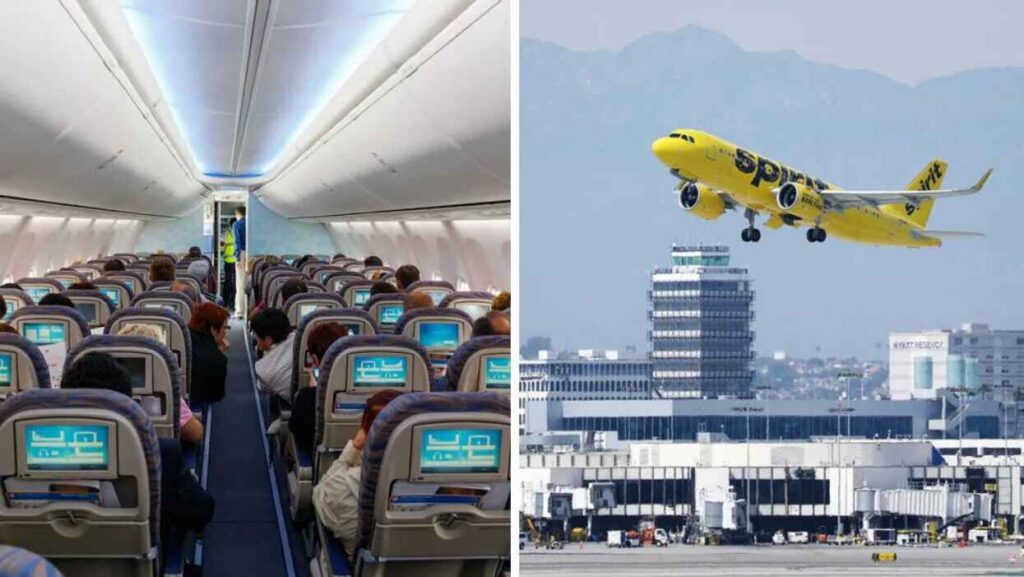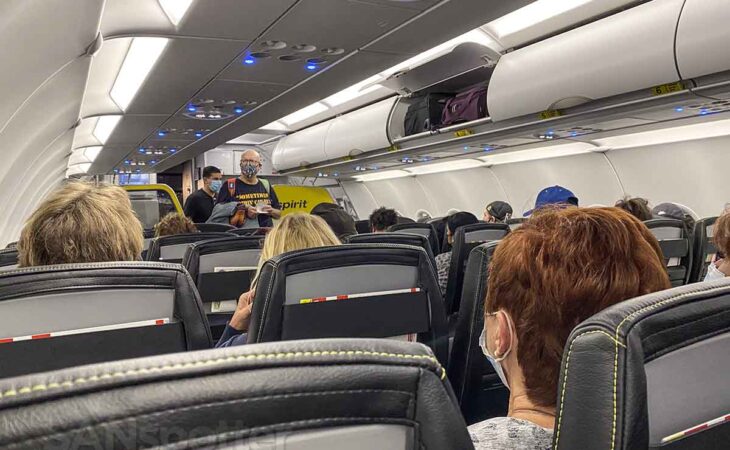Spirit Airlines, a low-cost carrier headquartered in Miramar, Florida, has been a topic of discussion regarding its safety standards. As air travel remains one of the safest modes of transportation, it’s crucial to understand the factors that contribute to this safety, especially for budget airlines like Spirit. This article aims to provide a comprehensive analysis & question “Is Spirit Airlines Safe?”, covering various aspects from regulatory compliance to passenger experiences.
Overview of Spirit Airlines
History of Spirit Airlines
Founded in 1980 as Charter One, Spirit Airlines transitioned to a low-cost carrier model in 2007. This shift allowed the airline to offer some of the lowest fares in the industry by adopting an unbundled fare structure where passengers pay separately for services such as baggage and seat selection.
Fleet Composition
Spirit Airlines operates an all-Airbus fleet, including models like the A320 and A321. The airline’s fleet is relatively young, with an average age of around six years, which contributes to overall safety and operational efficiency.
Operational Scope
Spirit Airlines serves over 75 destinations across the United States, Latin America, and the Caribbean. Their extensive network allows them to connect numerous cities at competitive prices.
Spirit Airlines Information
| Aspect | Details |
|---|---|
| Airline Name | Spirit Airlines |
| Founded | 1980 (as Charter One), rebranded to Spirit Airlines in 1992 |
| Headquarters | Miramar, Florida, USA |
| Fleet Size | 168 aircraft (as of 2024) |
| Fleet Composition | All-Airbus fleet including A319, A320, A320neo, and A321 models |
| Average Fleet Age | Approximately 6 years |
| Number of Destinations | Over 75 |
| Operational Scope | United States, Latin America, and the Caribbean |
| Business Model | Ultra-low-cost carrier |
| Key Safety Certifications | FAA Part 121 Certification, IOSA (IATA Operational Safety Audit) Certification |
| Regulatory Compliance | Adheres to FAA regulations including routine inspections, maintenance checks, and crew training programs |
| Incident History | No fatal incidents; few minor incidents involving technical malfunctions or passenger disturbances |
| Maintenance Programs | Regular inspections, preventive maintenance, and adherence to manufacturer guidelines |
| Technological Investments | Modern avionics, advanced navigation systems, real-time monitoring of aircraft performance |
| Pilot Training Programs | Extensive training including simulator sessions, recurrent training, and continuous professional development |
| Crew Qualifications | Stringent qualification standards including background checks, medical examinations, and continuous training |
| Passenger Safety Measures | Safety briefings, in-flight safety features (advanced fire suppression, smoke detectors, emergency lighting), emergency procedures |
| Customer Reviews | Mixed; positive for affordability and efficiency, negative for additional fees not related to safety |
| Safety Perception | Generally positive; passengers feel confident in the airline’s safety standards |
| Comparative Safety | Comparable to other major airlines; adheres to industry safety norms despite low-cost model |
| Expert Opinions | Positive feedback from aviation experts and pilots for training programs, safety protocols, and continuous improvement |
| Financial Stability | Strong financial stability allowing continuous investment in safety enhancements |
| Cost vs. Safety | Low-cost fares do not mean lower safety standards; adheres to stringent FAA regulations ensuring safety is not compromised |
Regulatory Compliance and Safety Records
FAA Regulations
The Federal Aviation Administration (FAA) oversees the safety of all commercial airlines operating in the United States. Spirit Airlines adheres to strict FAA regulations, including routine inspections, maintenance checks, and crew training programs.
Safety Certifications
Spirit Airlines holds several safety certifications, including IOSA (IATA Operational Safety Audit) certification, which assesses an airline’s operational management and control systems.
Incident and Accident History
While Spirit Airlines has experienced a few incidents, none have resulted in fatalities. These incidents are often minor and involve issues like technical malfunctions or passenger disturbances. The airline’s track record indicates a strong commitment to safety.

Aircraft Maintenance and Safety Measures
Maintenance Programs
Spirit Airlines employs rigorous maintenance programs to ensure the airworthiness of their fleet. These programs include regular inspections, preventive maintenance, and adherence to manufacturer guidelines.
Safety Protocols
Spirit Airlines has implemented various safety protocols, such as pre-flight checks, in-flight safety briefings, and emergency procedures. These measures are designed to ensure the safety of both passengers and crew.
Technological Advancements
The airline continually invests in technological advancements to enhance safety. This includes modern avionics, advanced navigation systems, and real-time monitoring of aircraft performance.
Pilot and Crew Training
Training Programs
Spirit Airlines places significant emphasis on training its pilots and crew members. Pilots undergo extensive training, including simulator sessions and recurrent training to stay updated on the latest safety practices.
Safety Drills
Regular safety drills are conducted to prepare the crew for various emergency scenarios. These drills ensure that the crew can effectively manage in-flight emergencies and assist passengers.
Crew Qualifications
Spirit Airlines’ crew members are required to meet stringent qualification standards. This includes background checks, medical examinations, and continuous training to maintain their proficiency.
Passenger Safety and Comfort
Safety Briefings
Before each flight, passengers receive a safety briefing that covers essential information such as the location of emergency exits, usage of seat belts, and oxygen masks.
In-Flight Safety Features
Spirit Airlines’ aircraft are equipped with modern safety features, including advanced fire suppression systems, smoke detectors, and emergency lighting to guide passengers to exits during an evacuation.
Passenger Experience
Despite being a low-cost carrier, Spirit Airlines strives to ensure a safe and comfortable experience for its passengers. The airline offers basic amenities and encourages passengers to be aware of safety procedures.

Customer Reviews and Perceptions
Positive Reviews
Many passengers appreciate Spirit Airlines for its affordability and efficiency. Positive reviews often highlight the airline’s punctuality, friendly staff, and overall value for money.
Negative Reviews
Some negative reviews focus on the additional fees for services that other airlines might include in the ticket price. However, these reviews generally do not pertain to safety concerns.
Perception of Safety
Overall, the perception of safety among Spirit Airlines passengers is positive. Most passengers feel confident in the airline’s ability to provide a safe travel experience.
Comparisons with Other Airlines
Safety Rankings
Spirit Airlines often ranks comparably with other major airlines in terms of safety. While it may not offer the same level of luxury as some higher-cost carriers, its safety standards are on par with industry norms.
Service Quality
When comparing service quality, it’s important to consider that Spirit Airlines operates on a low-cost model. While this means fewer complimentary services, it does not compromise on safety.
Cost vs. Safety
Travelers often wonder if low-cost fares mean lower safety standards. However, regulatory bodies like the FAA ensure that all airlines, regardless of their fare structure, adhere to stringent safety regulations.
Expert Insights
Aviation Experts
Aviation experts often commend Spirit Airlines for its commitment to maintaining a young fleet and adhering to safety protocols. They emphasize that safety is not compromised despite the airline’s budget-friendly model.
Pilot Perspectives
Pilots with experience at Spirit Airlines generally have positive feedback about the airline’s training programs and operational standards. They highlight the airline’s focus on continuous improvement in safety practices.
Industry Analysts
Industry analysts point out that Spirit Airlines’ safety record is a testament to its robust safety management systems. They also note that the airline’s financial stability allows it to invest in necessary safety enhancements.
Conclusion
Spirit Airlines, while known for its budget-friendly fares, maintains high safety standards comparable to major airlines. With a young fleet, rigorous maintenance programs, and comprehensive training for pilots and crew, the airline ensures a safe travel experience.
For travelers considering Spirit Airlines, it is reassuring to know that the airline prioritizes safety. While the low-cost model means fewer included services, passengers can trust that safety is not compromised. Spirit Airlines remains a viable option for cost-conscious travelers seeking a safe and reliable airline.
